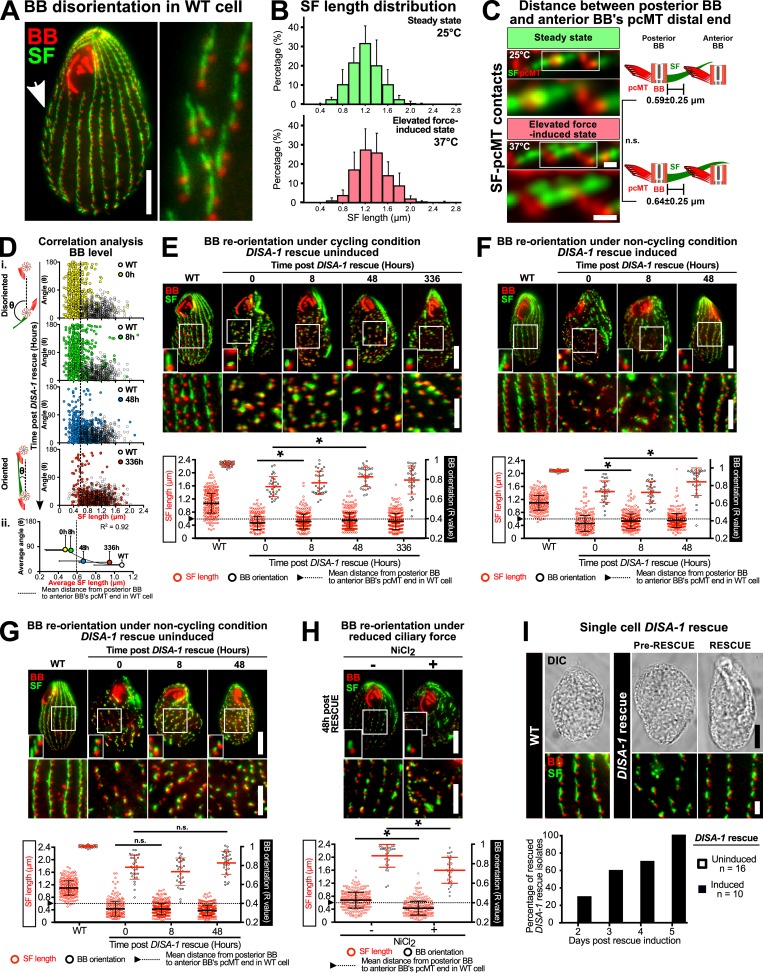Figure S1.
SFs promote BB reorientation. (A) Widefield image depicting BB disorientation in WT cell. Arrow marks disoriented BBs. Scale bar, 10 µm (cell), 4.5 µm (inset width). (B) Distribution of SF length measured from SIM-acquired SF-BB images. (C) Distance measurements between posterior BB and anterior BB’s pcMT distal end in WT cells at steady-state and elevated force-induced state. Scale bars, 500 nm. (D) i: SF length positively corresponds with proper BB orientation (angle: SF angular displacement from its associated BB to the cell’s anterior pole) on the individual BB level during DISA-1 rescue. (ii) Correlation analysis between the average SF length and BB orientation (angle) during DISA-1 rescue. Most BBs regain proper orientation once the length of their SFs surpasses the minimal length to establish SF–pcMT contacts (dotted line marks the mean distance from the posterior BB to the anterior BB’s pcMT distal end in WT cells). Data points are fitted with a polynomial (order = 2) function. (E) Negative control of BB reorientation analysis under cycling condition. Recoveries in SF length and BB orientation were attributed to leaky DisAp expression. (F and G) BB reorientation analysis under noncycling conditions. (F) Under noncycling conditions, DISA-1 rescue promotes SF lengthening before BB reorientation. (G) Negative control of BB reorientation analysis under noncycling condition. SF length and BB orientation recovery do not occur without DisAp expression. (H) BB reorientation analysis under reduced ciliary force. Under reduced ciliary force, SFs remained short and BBs failed to reorient. All small insets show a representative BB and SF. (B–H) n = ≥300 SFs (≥30 cells). Mann-Whitney test. * denotes P value <0.01. Mean ± SD. (E–H) Scale bars, 10 µm (cell), 1.3 µm (small inset width), 5 µm (BB rows inset). (I) Top: DISA-1 rescue isolates are rescued upon DisAp expression. Scale bars, 10 µm (cell), 2 µm (inset). (I) Bottom: DISA-1 rescue isolates recover at different rates. BB, red; SF, green.

